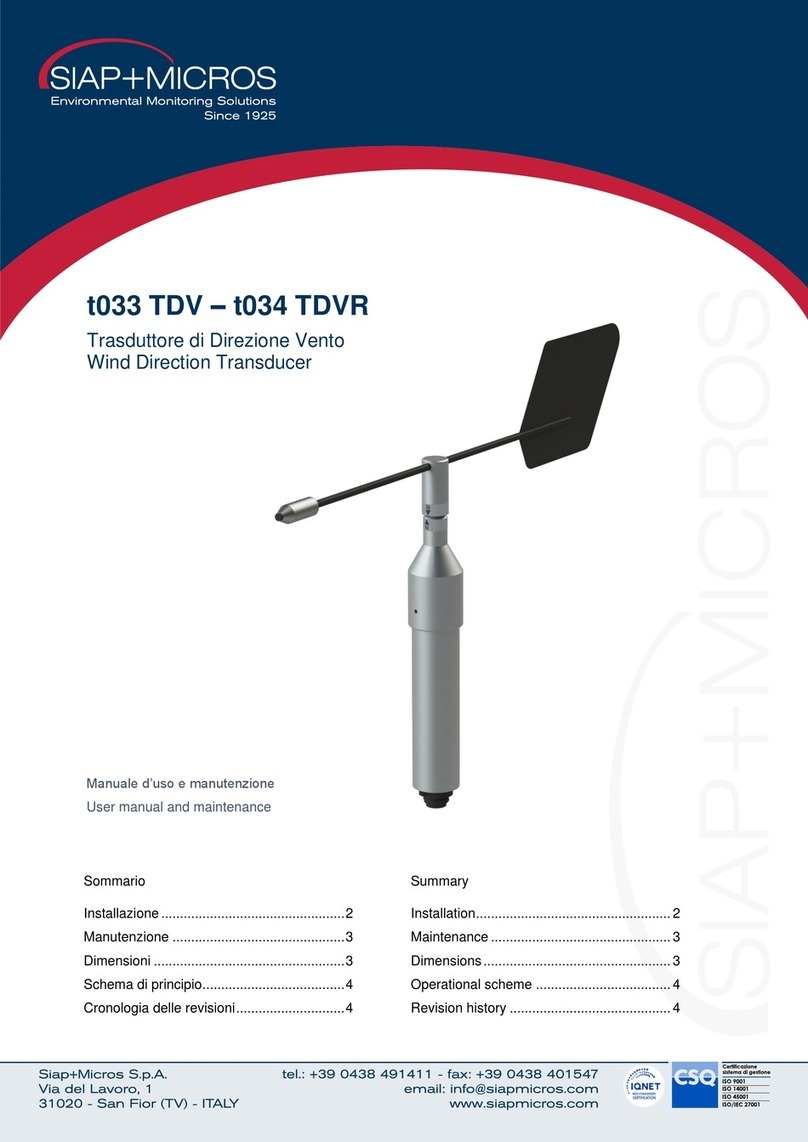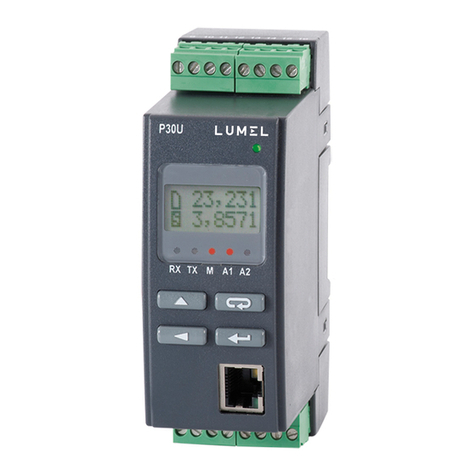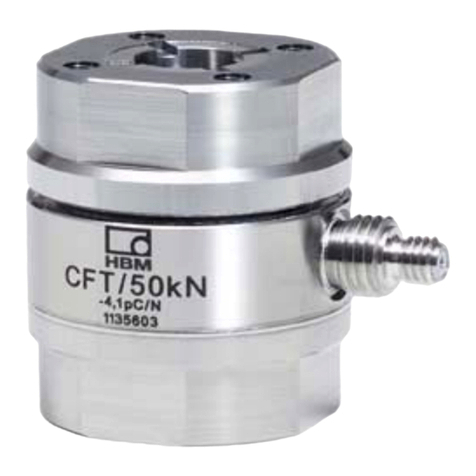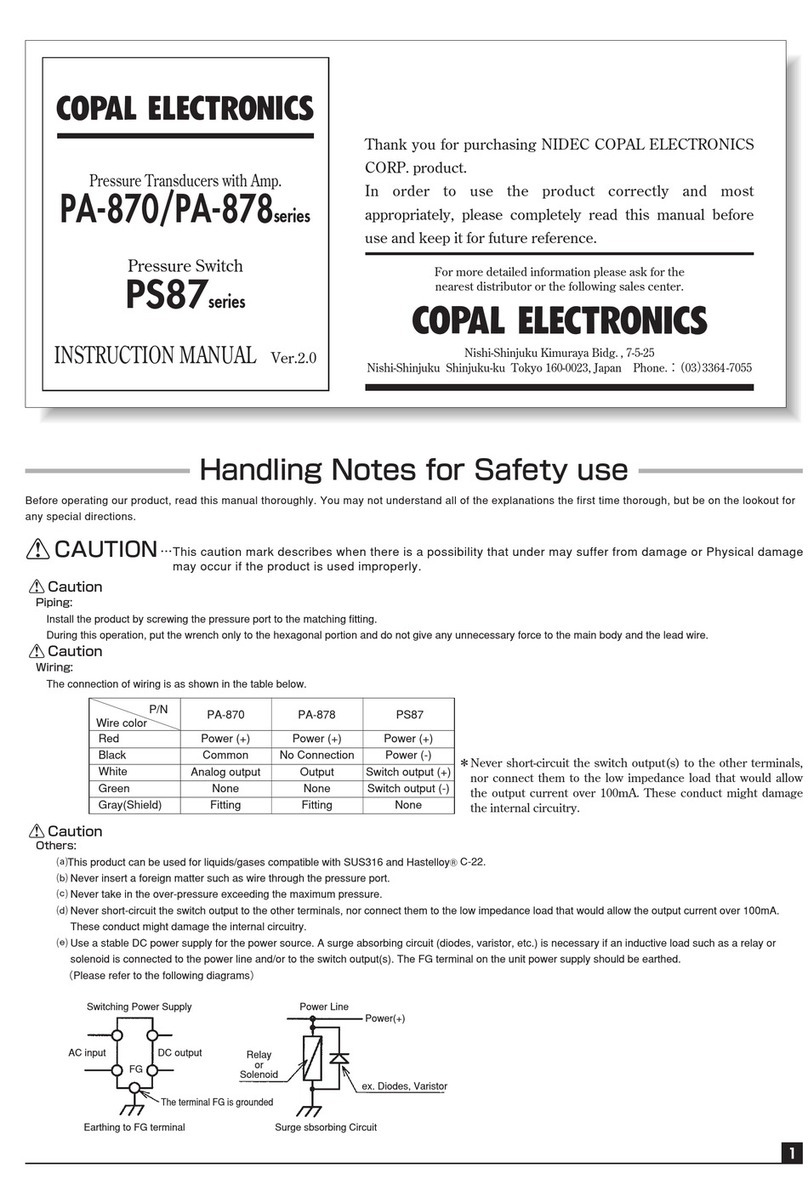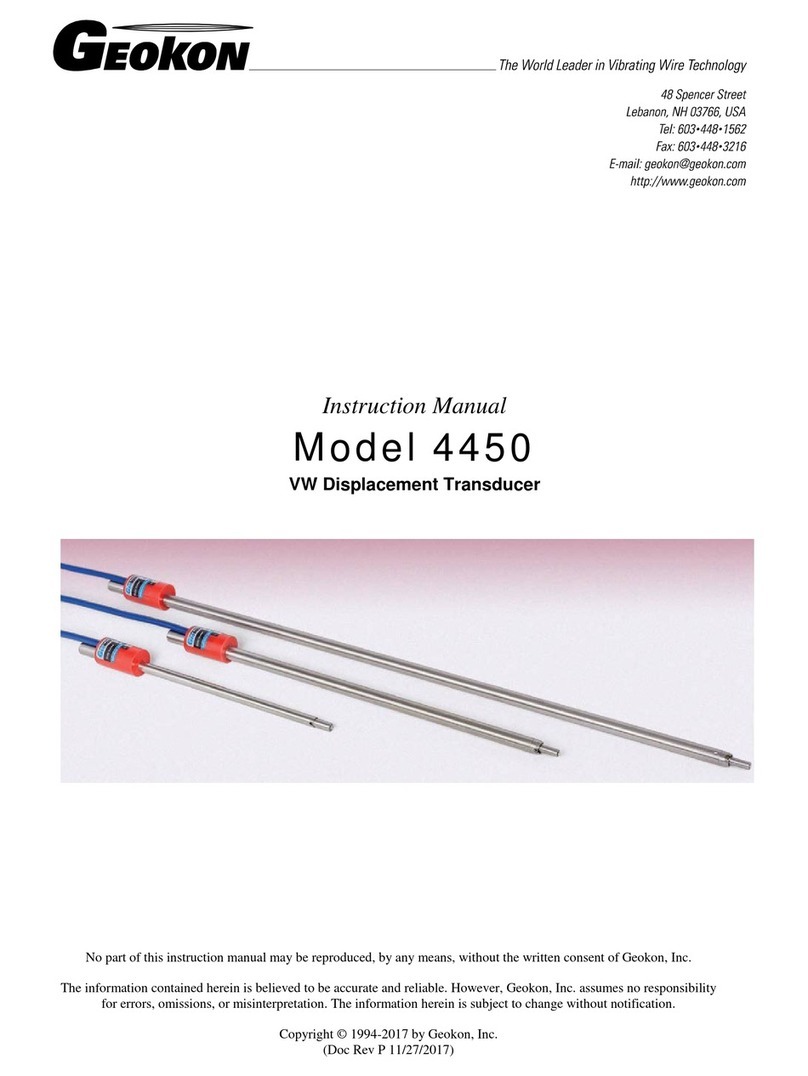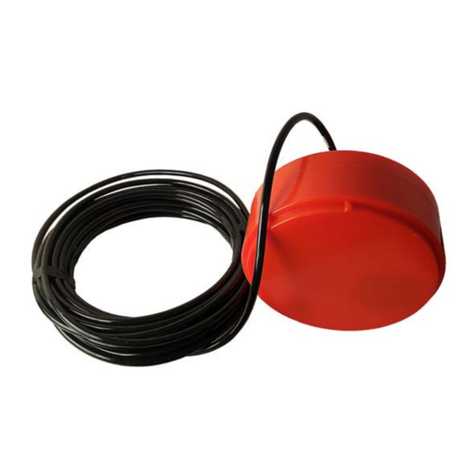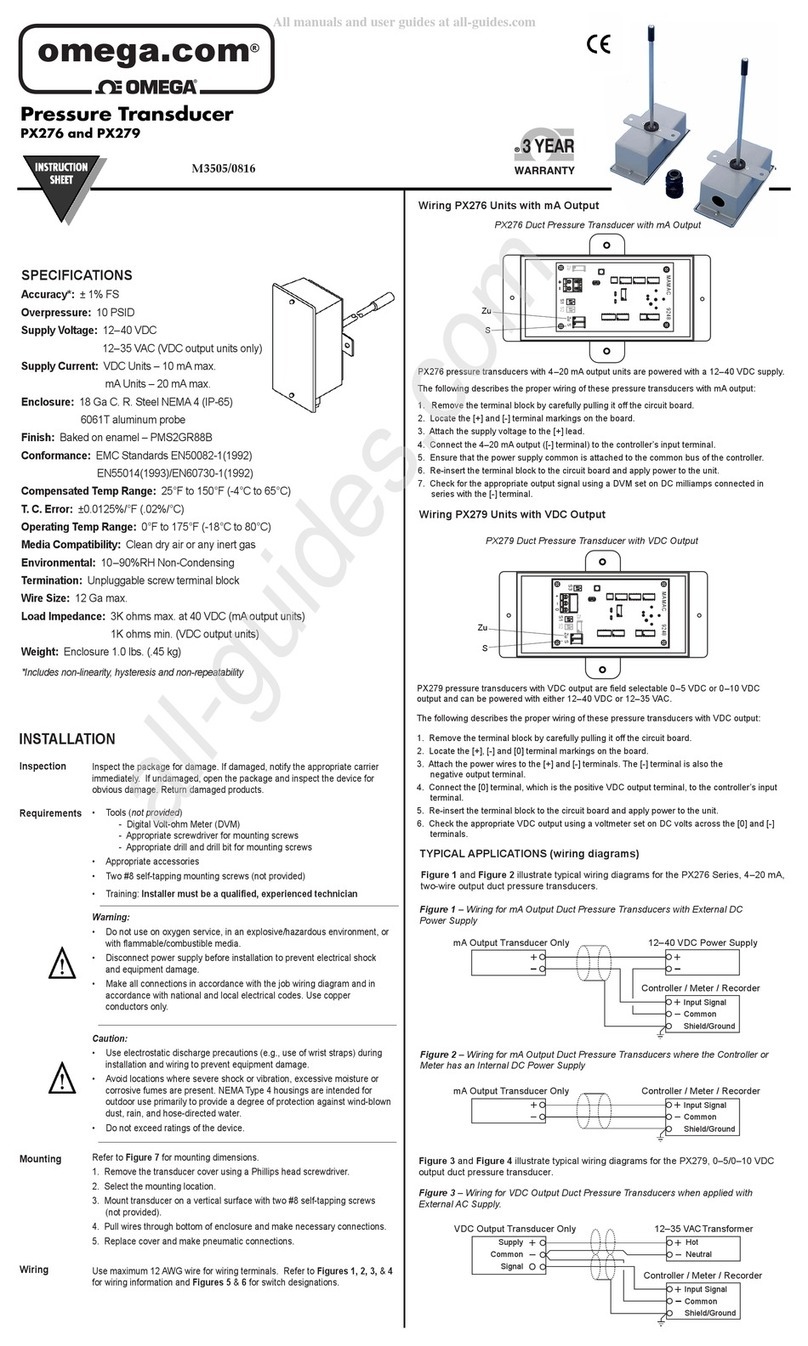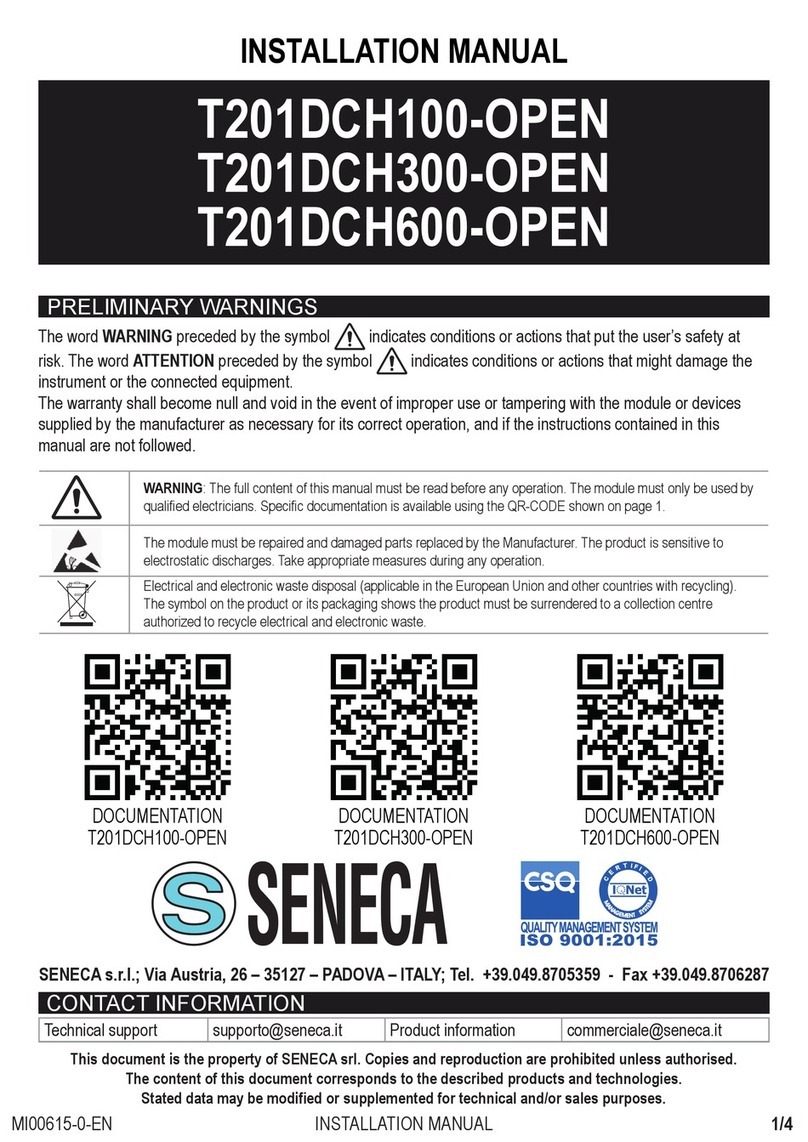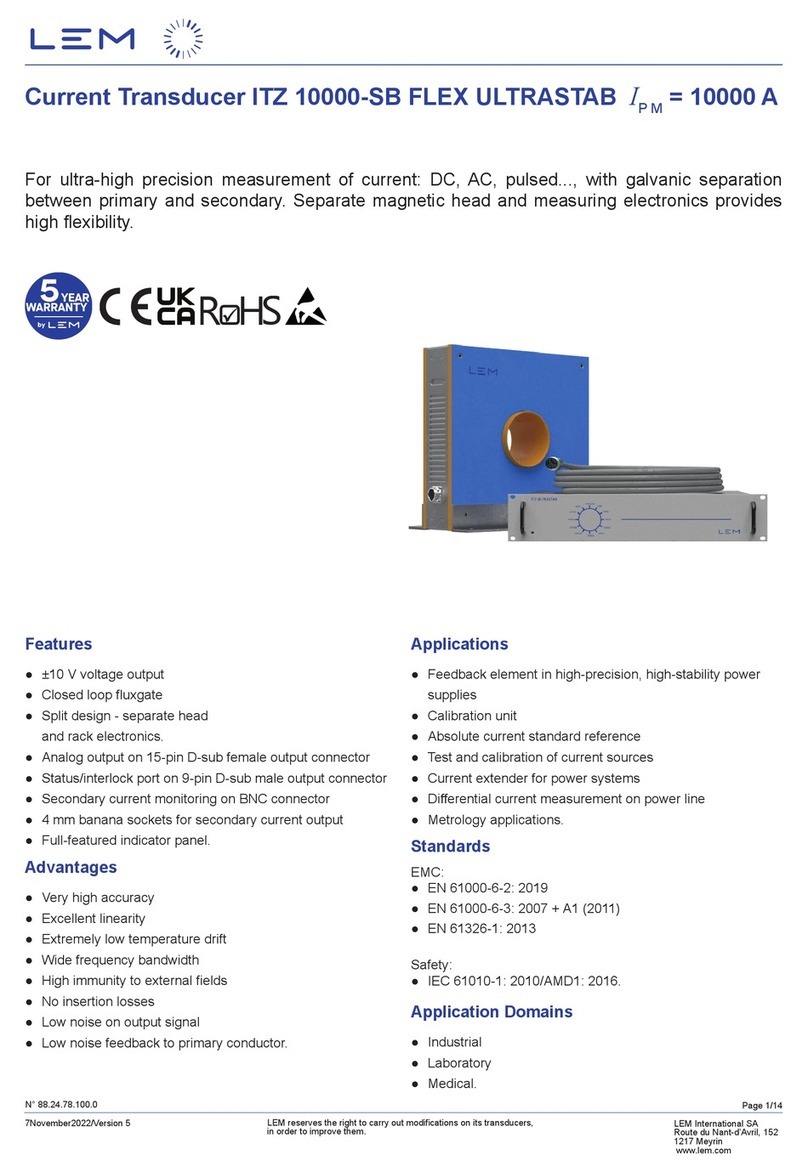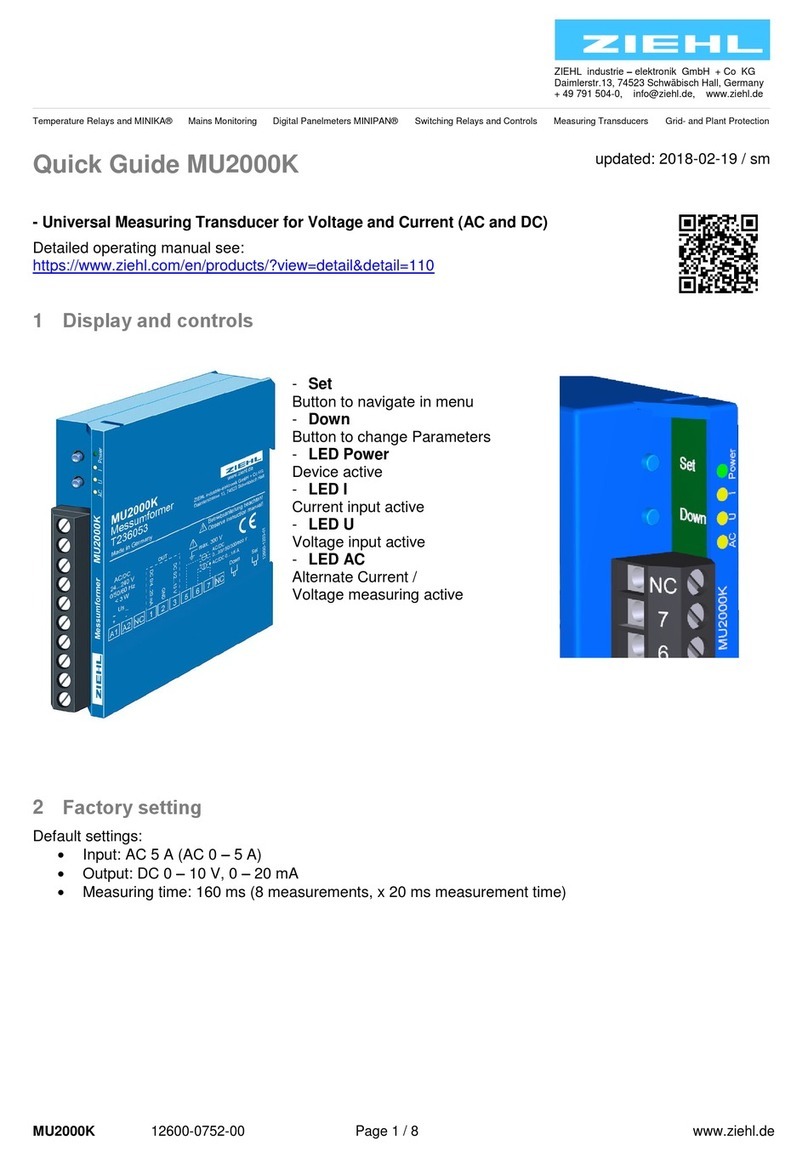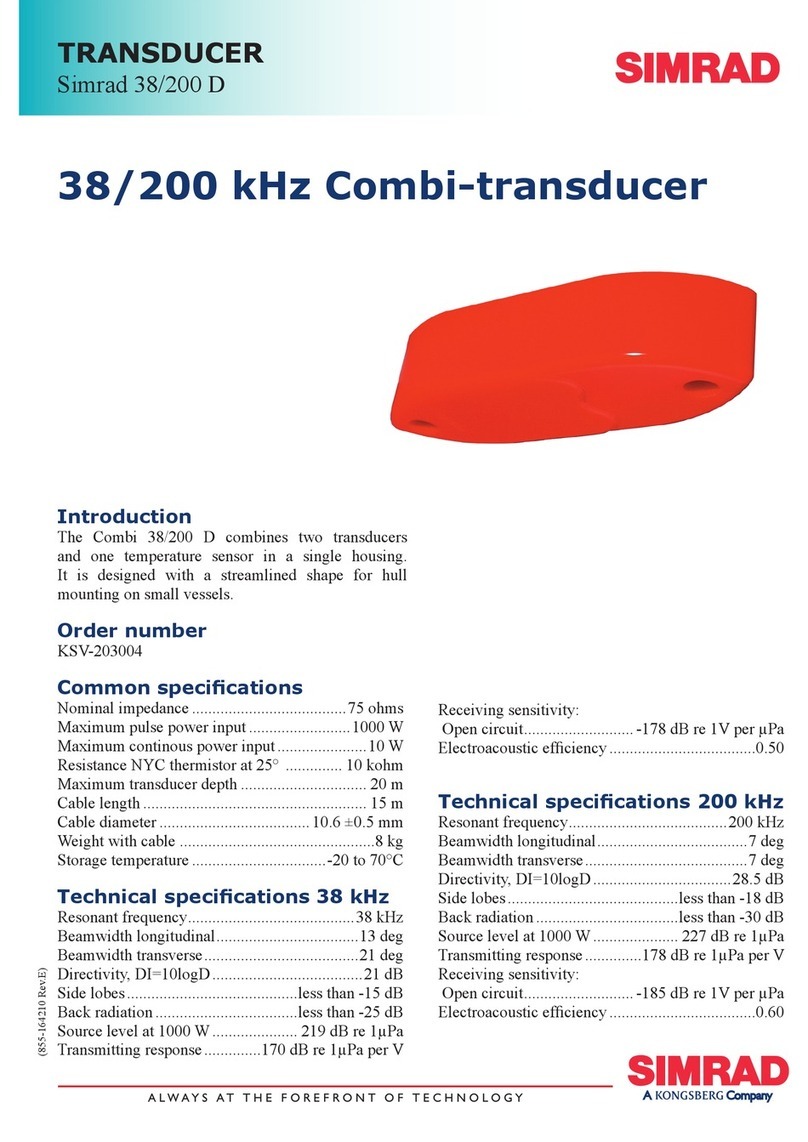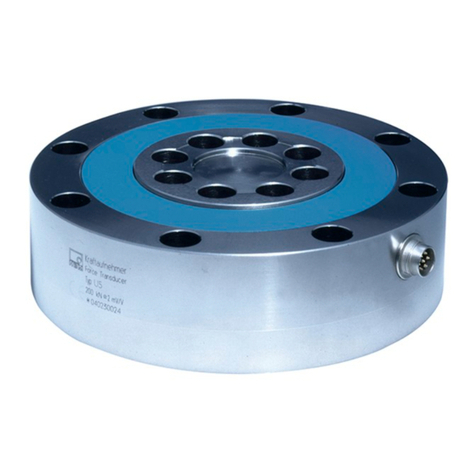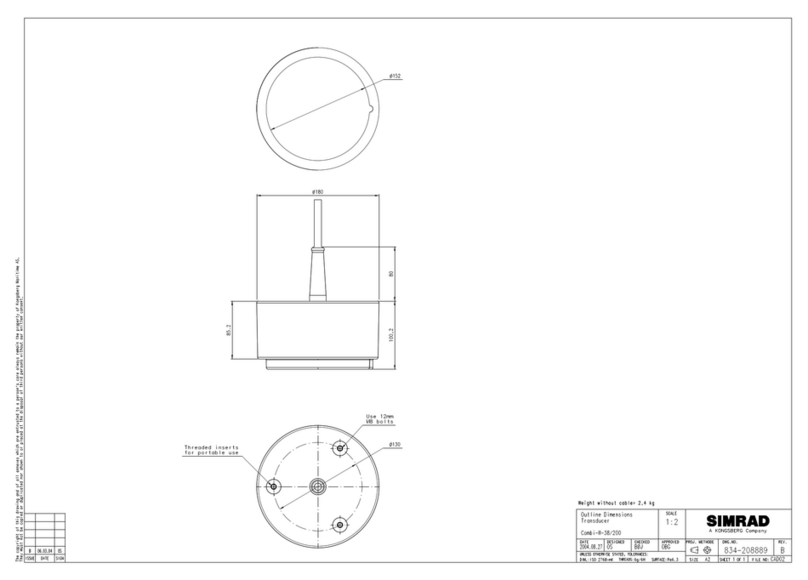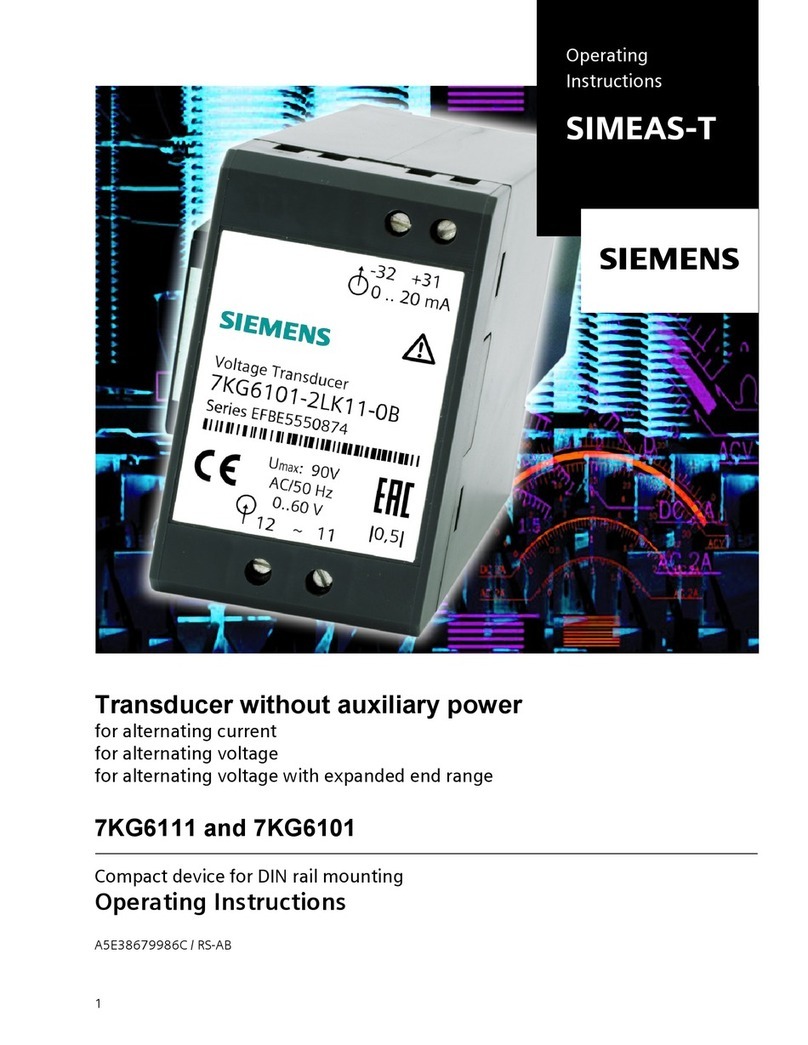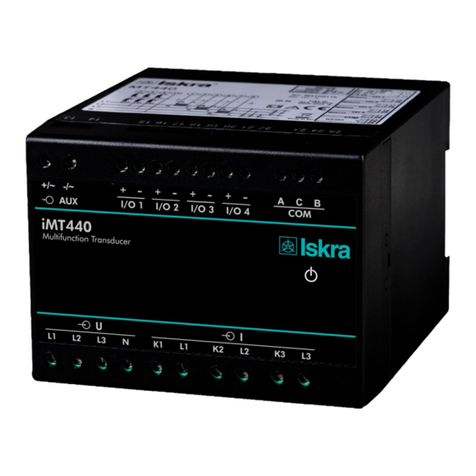SIAP+MICROS t027 TP200 Guide

t027 TP200
Precipitation Transducer, collecting area 200 cm²
User Manual and maintenance

User manual and maintenance
t027-di TP200.docx
27/10/2023 2Vers.: 1.0
Summary
1Introduction ................................................................................................................................................ 3
2Technical specificaion ................................................................................................................................ 4
3Installation and maintenance ..................................................................................................................... 6
3.1 Installation.......................................................................................................................................... 6
3.2 Maintenance ...................................................................................................................................... 6
4Electrical connection.................................................................................................................................. 7
4.1 Connector output ............................................................................................................................... 7
4.2 Connection cable ............................................................................................................................... 7
4.3 Data reading in serial (RS485 Modbus and SDI-12) ......................................................................... 7
4.3.1 RS485 Modbus mode .................................................................................................................... 7
4.3.2 SDI-12 mode.................................................................................................................................. 8
5Generic information ................................................................................................................................... 9
5.1 Safety................................................................................................................................................. 9
5.2 Appropriate use of the equipment ................................................................................................... 10
5.3 Storage ............................................................................................................................................ 10
5.4 Moving ............................................................................................................................................. 10
5.5 Disposal information ........................................................................................................................ 10
6Revision history ........................................................................................................................................11

User manual and maintenance
t027-di TP200.docx
27/10/2023 3Vers.: 1.0
1Introduction
TP200 is a tipping bucket rain gauge with a collecting area of 200 cm². It is extremely precise, very performant
and suitable also for environments where heavy rainfalls easily occur (monsoon or tropical rains). The tipping
bucket consists of a v-shaped element, particularly designed to minimize friction and facilitate the oscillating
action of the bucket, ensuring high standards of accuracy. The body is made of aluminium alloy and painted
with a special anti-UV paint which ensures long-lasting quality and resistance to the weather events. The
TP200 can be supplied in three different versions: TP200-N with impulse/reed contact output, TP200-E and
TP200- 12, both equipped with a specific signal conditioning electronics that reduces measurement
uncertainties at high intensities of precipitation (both for intensity and amount values). TP200-E version
equipped with electronic correction can give on a single connector the reed contact output (rainfall amount),
the current output (intensity) and the Modbus serial output (both intensity and amount). TP200-12 version is
similar to the TP200-E but it has been designed on purpose to have the SDI-12 standard communication
protocol instead of Modbus. TP200-N is also available on heated version, powered at 24V (alternating or direct
current). In every version, the sensor is supplied with power and signal cable (12m).
Ordering Codes:
Reed contact output:...............................................................................t027a TP200-N
Heated version, Reed contact output: ....................................................t028a TP200R-N
Version with electronic correction ...........................................................t027q TP200-E
Available outputs: reed contact, current (or voltage), RS-485 Modbus
Version with electronic correction. ..........................................................t027r TP200-12
Available outputs: reed contact, current (or voltage), SDI-12

User manual and maintenance
t027-di TP200.docx
27/10/2023 4Vers.: 1.0
2Technical specificaion
Measurement performance
Collecting area
200 cm2
Conversion constant
0.2 mm/impulse
Amount resolution
0.2 mm
Intensity resolution (TP200-E and -12)
0.1 mm/h
Amount range
0 ÷ ∞ mm
Intensity range (TP200-E and -12)
0 ÷ 500 mm/h
Amount accuracy (-N)
± 2 % @ 10 ÷ 70 mm/h
± 5 % @ 70 ÷ 150 mm/h
± 7 % @ 150 ÷ 200 mm/h
± 10 % @ 200 ÷ 300 mm/h
Amount accuracy (TP200-E and -12)
± 2 % @ < 300 mm/h,
Intensity accuracy (TP200-E and -12)
± 2 % @ < 300 mm/h,
Operating conditions
Temperature
0 ÷ 70 °C
Temperature (heated version)
-20 ÷ 70 °C
Rainfall intensity
0 ÷ 500 mm/h
Output
Contatto reed
0.2 mm/impulse
RS-485 Modbus / SDI-12
Raw amount [mm], Adjusted intensity [mm/h],
Adjusted amount [mm]
Tension
0 ÷ 2 V ↔0 ÷ 500 mm/h
Current
4 ÷ 20 mA ↔0 ÷ 500 mm/h
Power supply and Consumption
Voltage supply
7 ÷ 30 Vdc
Heating system voltage supply (if present)
12 ÷ 24 V (DC o AC)
Power consumption
Min
Tipico
Massimo
RS-485 Modbus / SDI-12 / 0÷2 V
1
3
4÷20 mA
5
25
Mechanical specifications
Protective body
Aluminium alloy, stainless steel screws
Trim
Thermosetting polyester-based powder paint,
RAL 9003
Electrical connections
IP67 / 7 pole male connector

User manual and maintenance
t027-di TP200.docx
27/10/2023 5Vers.: 1.0
Dimension:
H - height: 345 mm
D - diameter: 165 mm
Element:
B – mouth calibrated 200 cm²
F1 – input filter
F2 – exhaust filter
GB – action group
E – management electronics (TP200
with non-natural output)
G – support shank
Weight: 2,2 kg

User manual and maintenance
t027-di TP200.docx
27/10/2023 6Vers.: 1.0
3Installation and maintenance
3.1 Installation
When installing a meteorological station, it is necessary to pay attention
to the characteristics of the place as the conformation of the land and the
proximity to any obstacles can affect the quality of the data that will be
collected. In particular, it must be kept in mind that any vertical obstacle
such as trees and buildings create an air turbulence equal to ten times
their height. For this reason, by way of example, a weather station must
maintain a minimum distance of 100 meters from 10 meter high
obstacles.
The rain gauges of the TP200 family must be installed according to WMO
standards, with the precipitate collection mouth at 2 metres. For their
installation, two types of poles are typically used, one for burying and
supported by a foundation plinth or one with a base for installation on
slabs, terraces, etc.
The electrical connection is made through the cable to the connector (A)
located on the lower part of the rain gauge. Mechanically, the rain gauge
is installed by positioning it on the top of the support pole (ø70mm)
without the upper part, cone and mouth, which can be removed by
unscrewing the 3 side fixing screws (C). Subsequently, insert the rain
gauge on the pole and fix it by tightening the 6 screws on the base (B),
the same screws are also used to check the horizontality of the calibrated
mouth of the rain gauge by checking the leveling with the spirit level inside (D).
Before putting the rain gauge into operation, remember to "release" the rocker from its locking elastic.
3.2 Maintenance
When using the TP200 rain gauges, it is necessary to pay attention to keeping the upper inlet clean to prevent
any bodies from obstructing the passage of water, compromising its operation. Indeed dust, leaves, etc. can
reduce the flow capacity of the water through the duct that leads to the oscillating bucket. It is advisable to
clean the upper cone, the filter present on it and the one on the lower part, in pre-established periods with
clean water, unscrewing it from the body of the rain gauge. Finally, it is advisable to clean the nozzle located
immediately above the measuring scale with a brush.

User manual and maintenance
t027-di TP200.docx
27/10/2023 7Vers.: 1.0
4Electrical connection
4.1 Connector output
Pin
TP200-N
TP200-E
TP200-12
1
Contact
Contact
Contact
2
Contact
Contact
Contact
3
n.c.
A-RS485
SDI-12 (data)
4
n.c.
B-RS485
n.c.
5
n.c.
+4÷20 mA
(o +0÷2 Vdc)
+4÷20 mA
(o +0÷2 Vdc)
6
n.c.
Vcc
Vcc
7
n.c.
GND
GND
4.2 Connection cable
The connection cable supplied with the sensor is made with circular connectors with housing, shielded
8x0.22mmq cable and ferrules for connection to the data logger terminals. The shield is connected to the black
cable.
Pin
1
2
3
4
5
6
7
7
Cable
Red
White
Green
Black
Orange
Yellow
Blue
Brown
TP200-N
Contact
Contact
n.c.
n.c.
n.c.
n.c.
n.c.
n.c.
TP200-E
Contact
Contact
A-RS485
B-RS485
+4÷20 mA
(o +0÷2 Vdc)
Vcc
GND
GND
TP200-12
Contact
Contact
SDI-12
(data)
n.c.
+4÷20 mA
(o +0÷2 Vdc)
Vcc
GND
GND
4.3 Data reading in serial (RS485 Modbus and SDI-12)
Sensors with RS485 Modbus or SDI-12 output send data only upon specific request from the PC, data logger
or PLC.
Below are the correct communication parameters of the device performing the interrogation.
4.3.1 RS485 Modbus mode
Serial port settings: 9600 baud, no parity, 8 data bit, 1 bit di stop
Compatible with ModBus RTU protocol, functions supported: “03 – read Holding Registers” e “04 – Read Input
Registers”.
Data type: “2 registers swapped float IEEE 754 in the form CDAB where A is the most significant byte of the
float and D is the less significant byte of the float (swapped float)”.

User manual and maintenance
t027-di TP200.docx
27/10/2023 8Vers.: 1.0
ID
Registers
Units
Reg. 1-2
Reg. 3-4
Reg. 5-6
Reg. 7-8
Reg. 9-10
Reg. 11-12
Reg. 13-14
17
1
mm
Total amount
of rain
Rain
intensity
Correct
total
amount of
rain for
intensity
Diagnostic
Supply Voltage
3
mm/h
5
mm
4.3.2 SDI-12 mode
Serial port settings: 1200 baud, even parity, 7 data bits, 1 stop bit
?! Address Query
aI! Send Identification
aM! Start Measurement
aC! Start Concurrent Measurement
aD0! Send Data
a
Position
Units
Decimals
Position 1
Position 2
Position 3
Position 4
Position 5
Position 6
Position 7
H
1
mm
3
Total
amount of
rain
Rain
intensity
Correct
total
amount of
rain for
intensity
Diagnostic
Supply
Voltage
2
mm/h
3
mm

User manual and maintenance
t027-di TP200.docx
27/10/2023 9Vers.: 1.0
5Generic information
The qualitative level of our instruments is the result of a continuous evolution of the product. This may cause
differences between what is reported in the manual and the instrument you have purchased.
Siap+Micros S.p.A. reserves the right to modify without notice technical specifications and dimensions to adapt
them to the needs of the product.
5.1 Safety
Please read these safety instructions carefully before using this product:
•The warranty will be void if the product is used differently from the instructions described in this manual.
•Any sign of tampering will void the warranty
•Use the devices only according to the instructions (environmental management, operation, wiring,
installation, etc.) provided in this manual
•The correct and safe operation of the device can only be guaranteed if the transport, storage, operation
and management of the device are compliant. This also applies to product maintenance.
•The device shall not be exposed to aggressive chemicals or solvents that could damage the plastic
casing and/or corrode the metal parts.
•Maintenance should only be performed by qualified and well trained personnel.
It is appropriate to carry out a careful risk assessment in relation to the context of installation and use of the
device by the installer considering the possible meteorological station in its complexity without being limited to
the sensor.
The instruments must be installed according to the rules of the trade, with equipment that complies with
applicable regulations and using supports correctly sized by qualified technicians and designed for the specific
purpose.
During installation operations, check the suitability of the surrounding environment and compliance with local
safety regulations.
The manufacturer declines all responsibility in case of failure due to negligence of the instructions, tampering,
uses not described in this manual, improper use, use by operators not trained.
Read the instructions and intended use carefully and be sure you understand before installing the device
Before starting the activities, check the integrity of the instrument to be installed, prepare the equipment
necessary for the work and wear the necessary PPE.
Take adequate measures to prevent the access of foreign personnel (untrained and uninformed) during the
installation, maintenance or replacement of the instrument.
Take precautions to avoid falling objects, both during the installation phases and during the operation of the
instrument.
Do not perform any activity in bad weather conditions.

User manual and maintenance
t027-di TP200.docx
27/10/2023 10 Vers.: 1.0
During maintenance, particularly if the station is not frequented, visually check for the absence of dangerous
insects and, if not, use suitable insecticides.
Consider the presence of any animals near the station, if so, pay attention to them.
Use only SIAP+MICROS original spare parts.
The instrument is not classified suitable (according to Directive 2014/34/EU) for use in atmospheres with
potential explosion risk pursuant to Directive 99/92/EC.
SIAP+MICROS strives to minimize health and safety risks in all phases of the instrument's life, including
installation, use, maintenance, decommissioning and disposal.
5.2 Appropriate use of the equipment
Use the instrument for its intended purpose, do not use it for any other purpose or cause malfunctions and/or
damage.
5.3 Storage
If you do not plan to use the equipment for an extended period of time (at least one year) disconnect all cables
from the equipment, place it in a clear plastic bag along with a bag of desiccant salts and seal the bag with
tape. Put appropriate indication on the bag of the contents and weight of the equipment by inserting the wording
"HANDLE WITH CARE".
Store the instrument in an environment with a temperature between 0°C and 60°C with a humidity not
exceeding 80%. Make sure that the instrument is stored in a stable position and that it cannot be damaged or
moved by inexperience or carelessness. Do not stack other tools or weights. Do not place the instrument on
top of other instruments and in any case ensure the solidity and stability of the underlying support.
Non esporre, stoccare lo strumento in ambienti con presenza di vapori e/o gas corrosivi.
5.4 Moving
In order to avoid any damage to the device during transportation, please keep it in upright position without
shaking.
5.5 Disposal information
Electrical and electronic equipment marked with specific symbol in compliance with 2012/19/EU
Directive must be disposed of separately from household waste. European users can hand them
over to the dealer or to the manufacturer when purchasing a new electrical and electronic
equipment, or to a WEEE collection point designated by local authorities. Illegal disposal is
punished by law.
Disposing of electrical and electronic equipment separately from normal waste helps to preserve natural
resources and allows materials to be recycled in an environmentally friendly way without risks to human health.

User manual and maintenance
t027-di TP200.docx
27/10/2023 11 Vers.: 1.0
6Revision history
The following table shows the description of the changes made to this document.
Version
Date
Updates
1.0
05/06/2023
Current version of the document.
All the information content in this document are the current available at the printing phase. Siap+Micros S.p.A. reserve the rights to change
the specifications without any advance notice
This manual suits for next models
3
Table of contents
Other SIAP+MICROS Transducer manuals
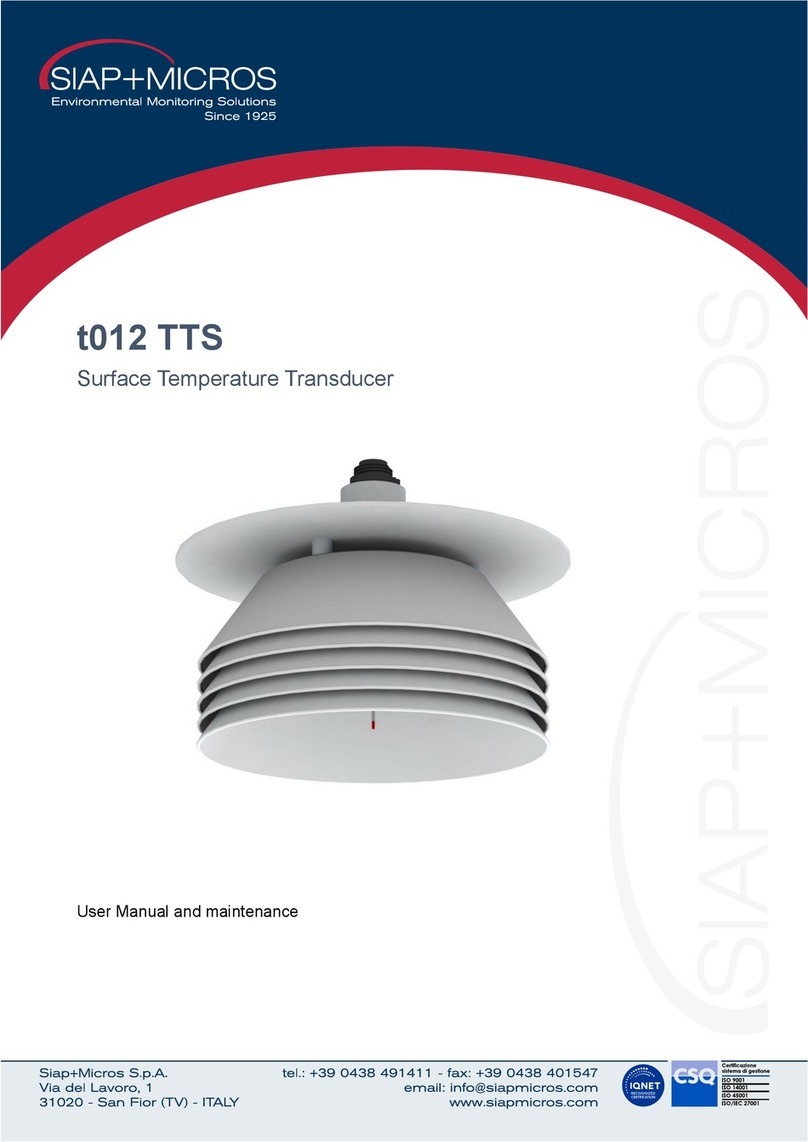
SIAP+MICROS
SIAP+MICROS t012 TTS Guide
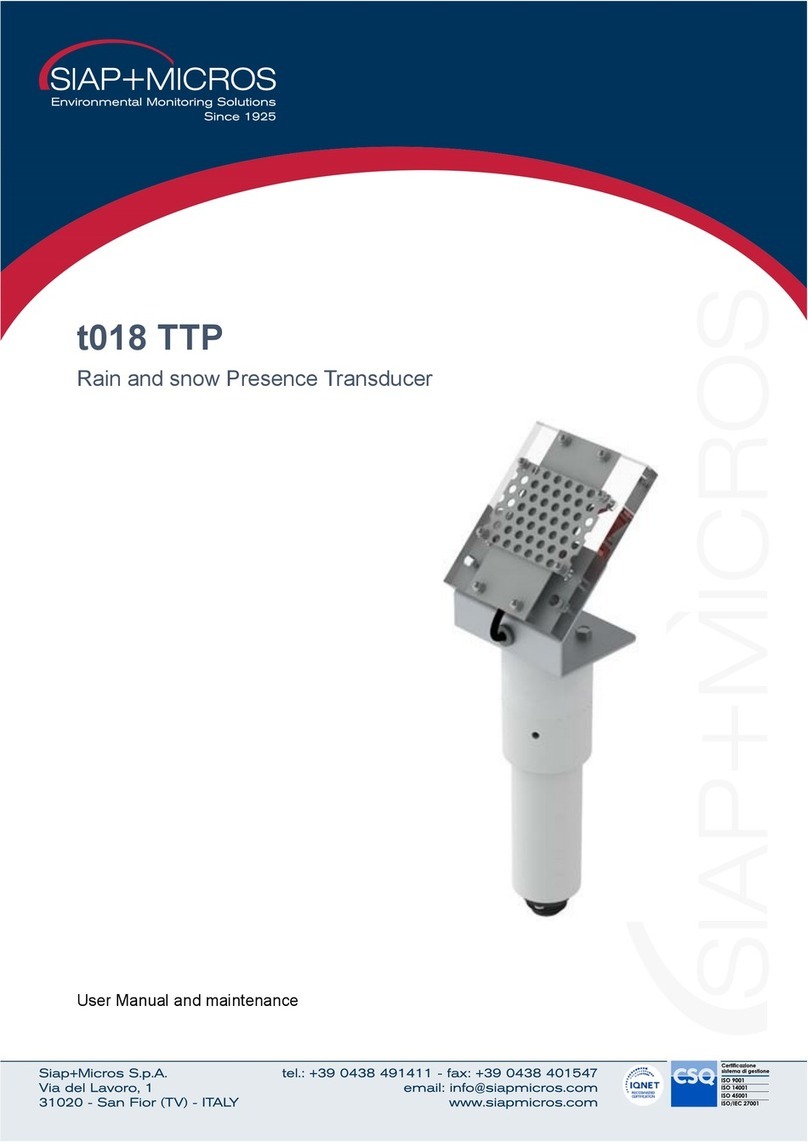
SIAP+MICROS
SIAP+MICROS t018 TTP Guide
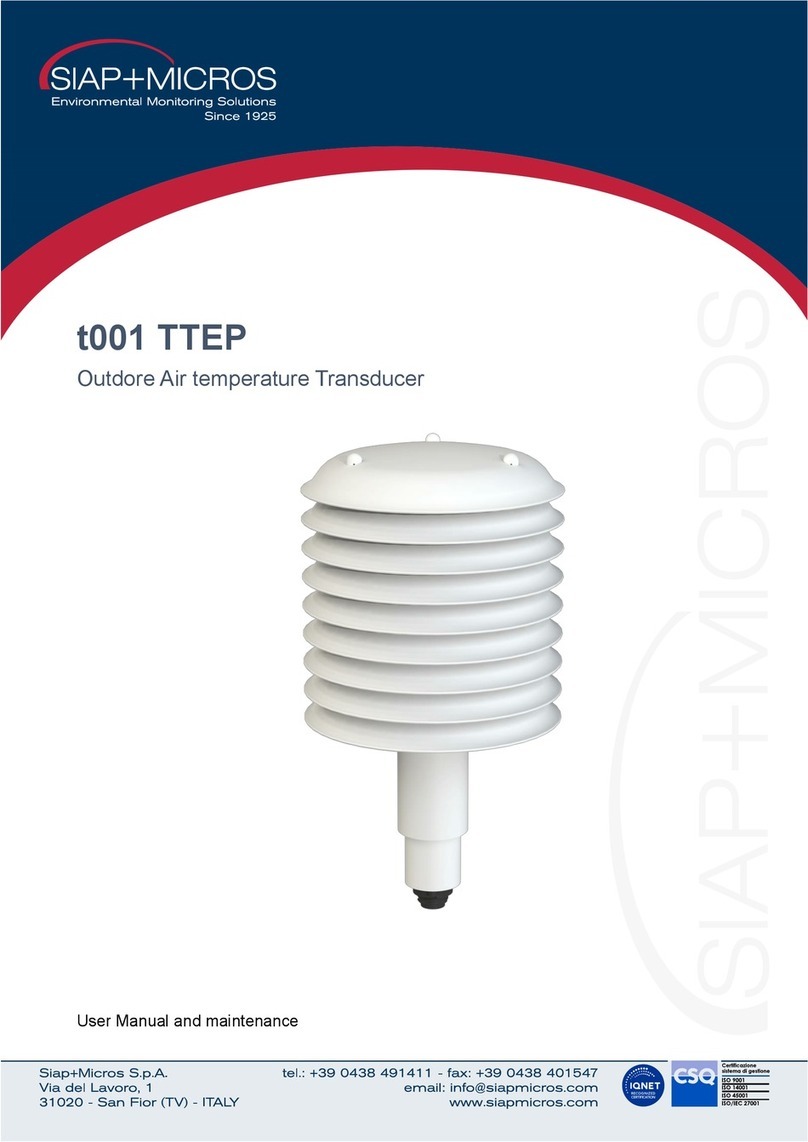
SIAP+MICROS
SIAP+MICROS t001 TTEP Guide
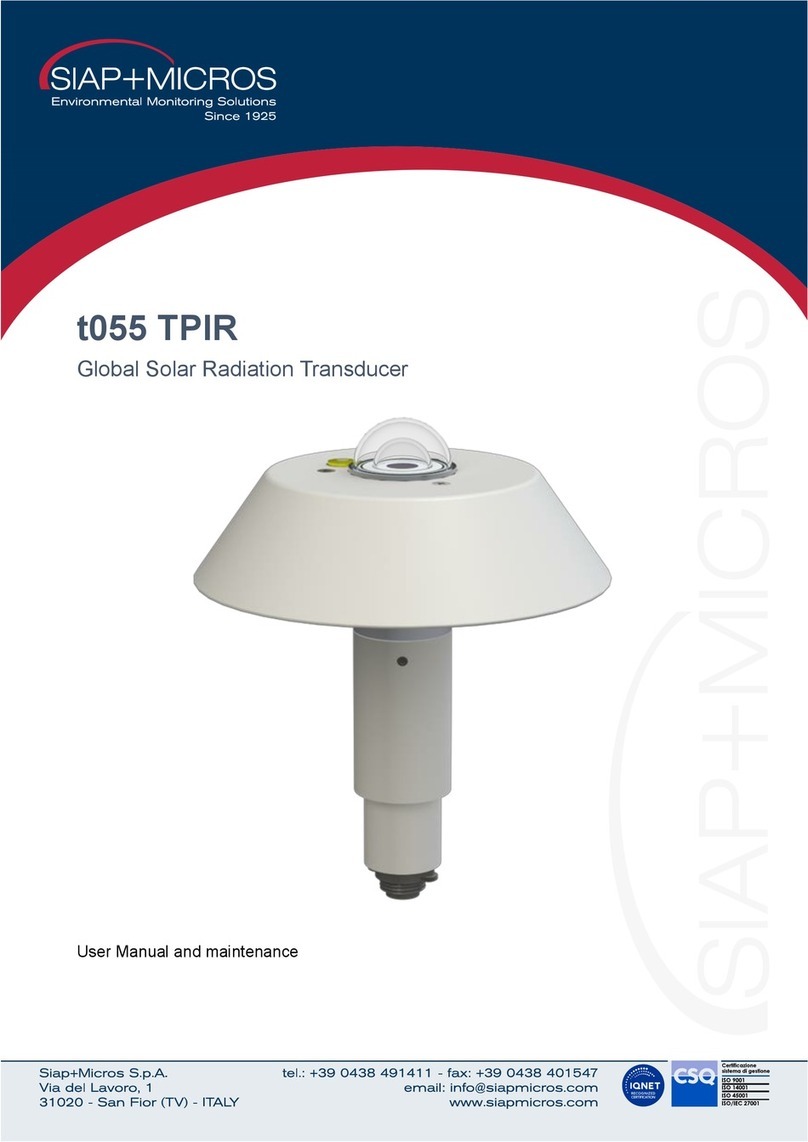
SIAP+MICROS
SIAP+MICROS t055 TPIR Guide
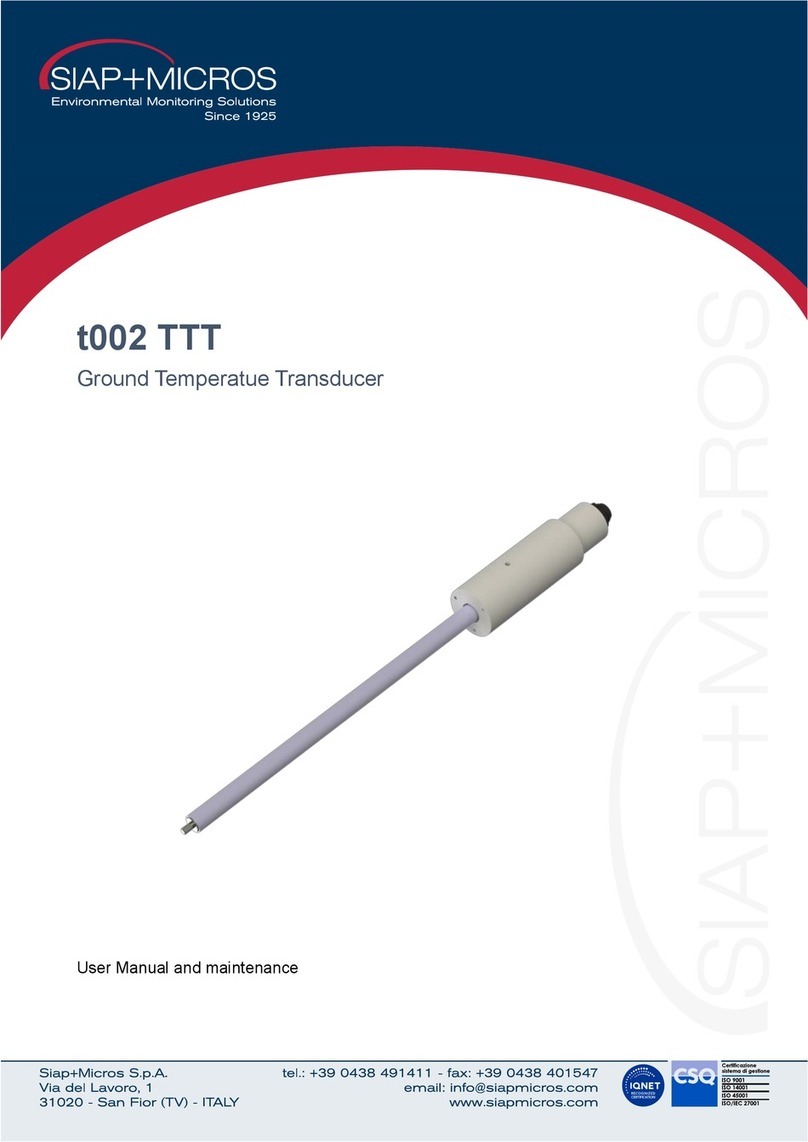
SIAP+MICROS
SIAP+MICROS t002 TTT Guide
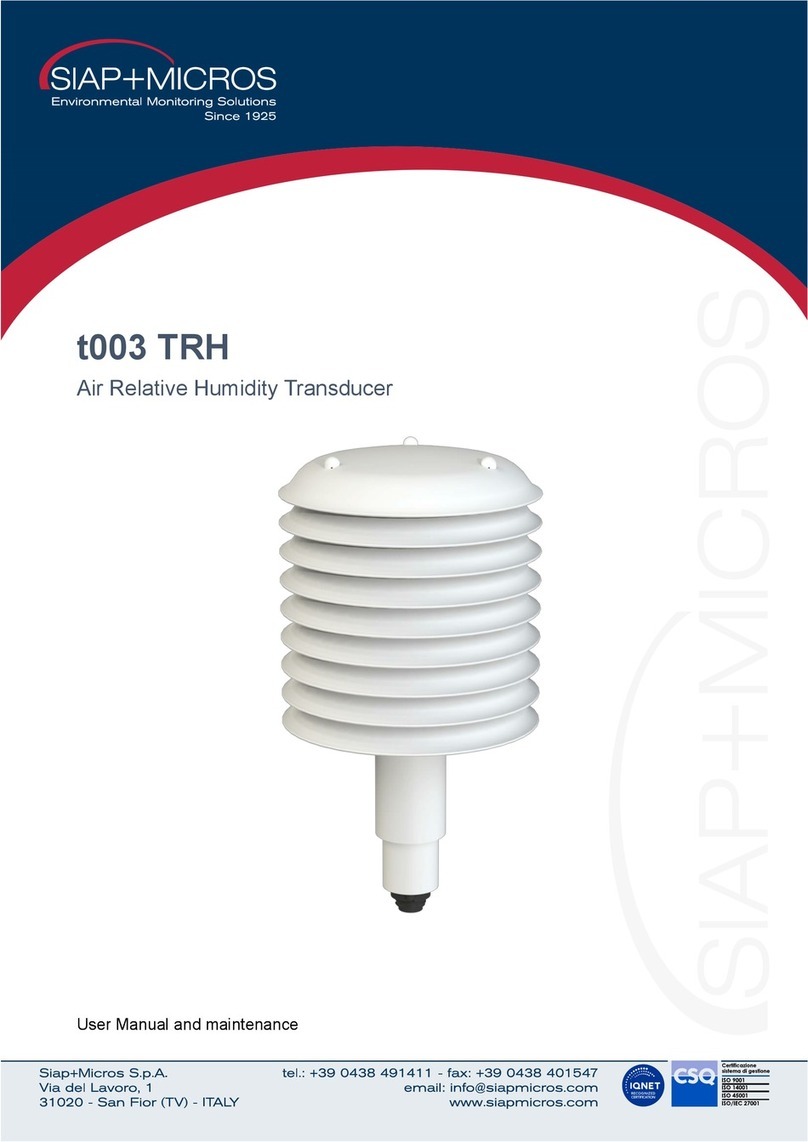
SIAP+MICROS
SIAP+MICROS t003 TRH Guide

SIAP+MICROS
SIAP+MICROS t018 TTP Guide
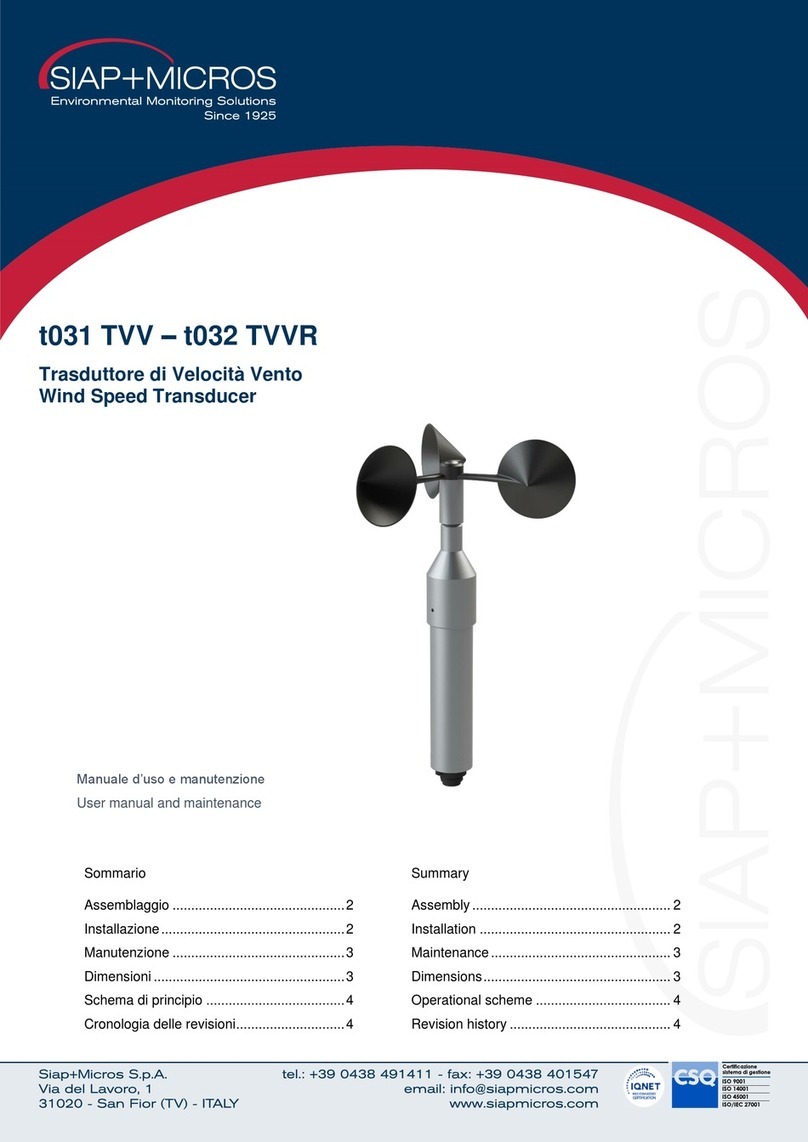
SIAP+MICROS
SIAP+MICROS t031 TVV Guide

SIAP+MICROS
SIAP+MICROS t031 TVV Guide
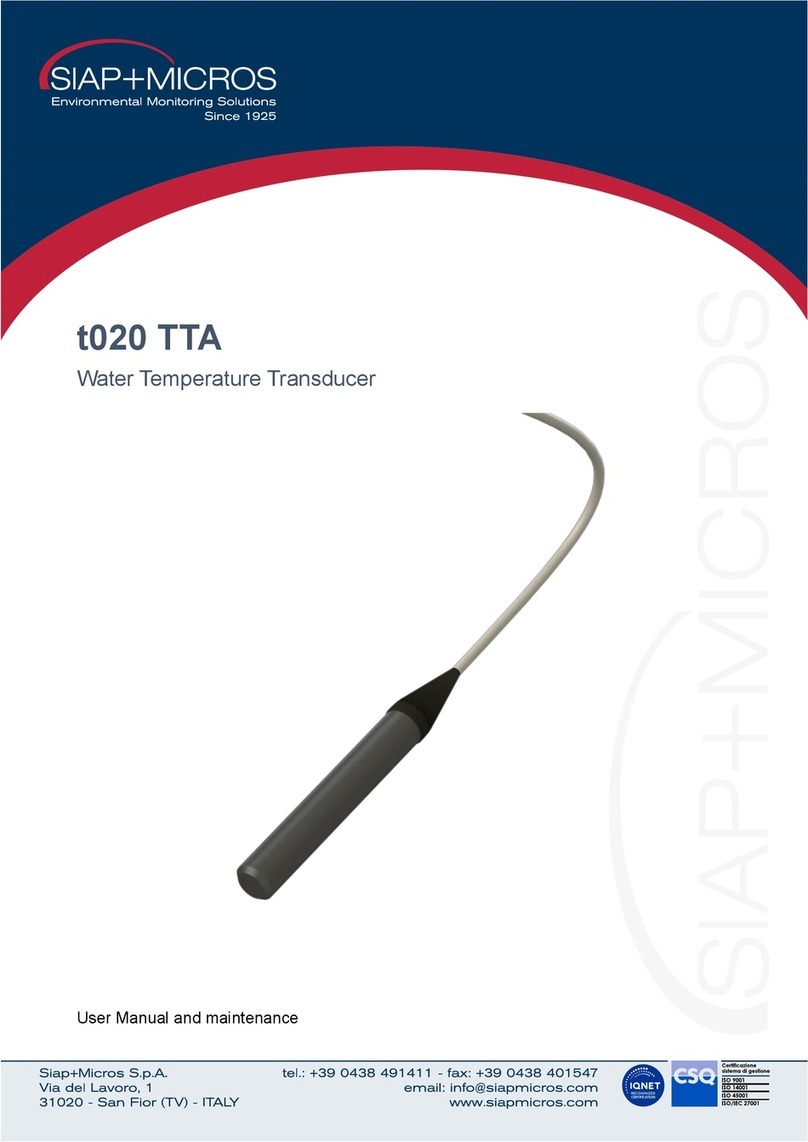
SIAP+MICROS
SIAP+MICROS t020 TTA Guide
